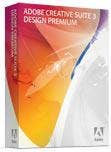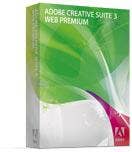Review: Adobe CS3 No Great Leap Forward From CS2
The CS3 suite is now divided in two almost indistinguishable bundles, one targeting print content (Adobe CS3 Design Premium, $1,799) and the other Web content (Adobe CS3 Web Premium, $1,599). With the exception of Fireworks and Contribute, Adobe includes the same core design, productivity and workflow tools in both suites: InDesign, Photoshop, Illustrator, Acrobat, Flash and Dreamweaver (the latter two aren't included in the Standard edition).


After examining the suites, the CRN Test Center found marginal improvements on some development tools and were disappointed by the performance of its major design tools, Photoshop and Illustrator.
Photoshop worked well on an Intel quad-core system with 2 GB of memory. Files were rendered on fast 300-Gbyte SAS hard drives working through an Adaptec RAID card. The test PC system had an Nvidia GeForce 8 SLI series graphics card.
Compared with Photoshop CS2, CS3 performed only marginally better. What's more, older PCs that performed poorly with CS2 will continue to suffer from performance degradation with CS3. Photoshop has always been notorious for creating huge flat memory files when PC memory was insufficient. With CS3, memory is going to continue to be an issue. Illustrator's performance in CS3, similarly, showed virtually no improvement vs. the CS2 version.
Photoshop CS3, however, transferred RAW files from a Kodak camera much faster than the CS2 version. That was a resource headache many users wanted fixed, and Adobe finally got it right. In addition, Photoshop CS3 now supports JPEG and TIFF formats with a new RAW plug-in.
Adobe is also offering a new Photoshop Extended edition, which makes up for some of Photoshop's past shortcomings. However, Photoshop Extended is pricey and only serves a niche audience. Extended's key features are not worth the $999 price if users don't work with video.
With Extended, users are able to work directly with AVI and MPEG-4 video files in Photoshop. Extended also accepts Flash video, CAD and QuickTime files. Professional videographers now can have control over all the pixels in every video frame. An animation palette helps users navigate and retouch frames, and new video features allow Photoshop users to create special effects as well.
Some of the features added to the applications, though, weren't worthy of a new version upgrade. For instance, Dreamweaver CS3 was marginally improved. With the exception of some integration with Photoshop files and a new Ajax framework, Dreamweaver comes with some workflow enhancements.
And the Ajax framework is no different than many free Ajax frameworks available on the Web. But Dreamweaver's editor does provide a unified view of Ajax applications by simplifying the development process. For instance, developers can compose Ajax widgets with all the elements readily accessible, including datasets and some simple special effects.
Flash CS3 is perhaps the most noteworthy product in the suite. In addition to the new and expected ActionScript 3.0 editing and debugging capabilities, Flash CS3 further simplifies the interchange of animated objects and code behaviors. Flash designers now can move entire animated objects into other Stages, including moving frames, code and other objects.
ActionScript 3.0 also is now fully ECMAScript-compliant. The Action editor comes with a code generator to help new Flash developers match object animation with code. Once an action is defined, developers can attach it to a frame to see its effect. Even with the new code builder, developers have to learn the language and the Flash API. ActionScript 3.0 is also more object-oriented than previous versions, so it helps to know languages such as C# and Java.
Flash CS3, too, features a mobile device emulator to help developers quickly run mobile applications and see the results without having to transfer them during a development cycle. Each device in the emulator comes with a profile showing which media files are acceptable to run. The emulator provides some panels to help developers tune applications based on a device's profile. The testing panels account for memory, data persistence, networking and various rendering throughputs.
Flash developers can also take advantage of some of the new file-importing capabilities in CS3. For instance, Fireworks designers can now import files directly from Photoshop and Illustrator and build effects on top of images. Once the effects and custom symbols are completed in Fireworks, Flash developers can quickly transfer them into Flash SWF files.